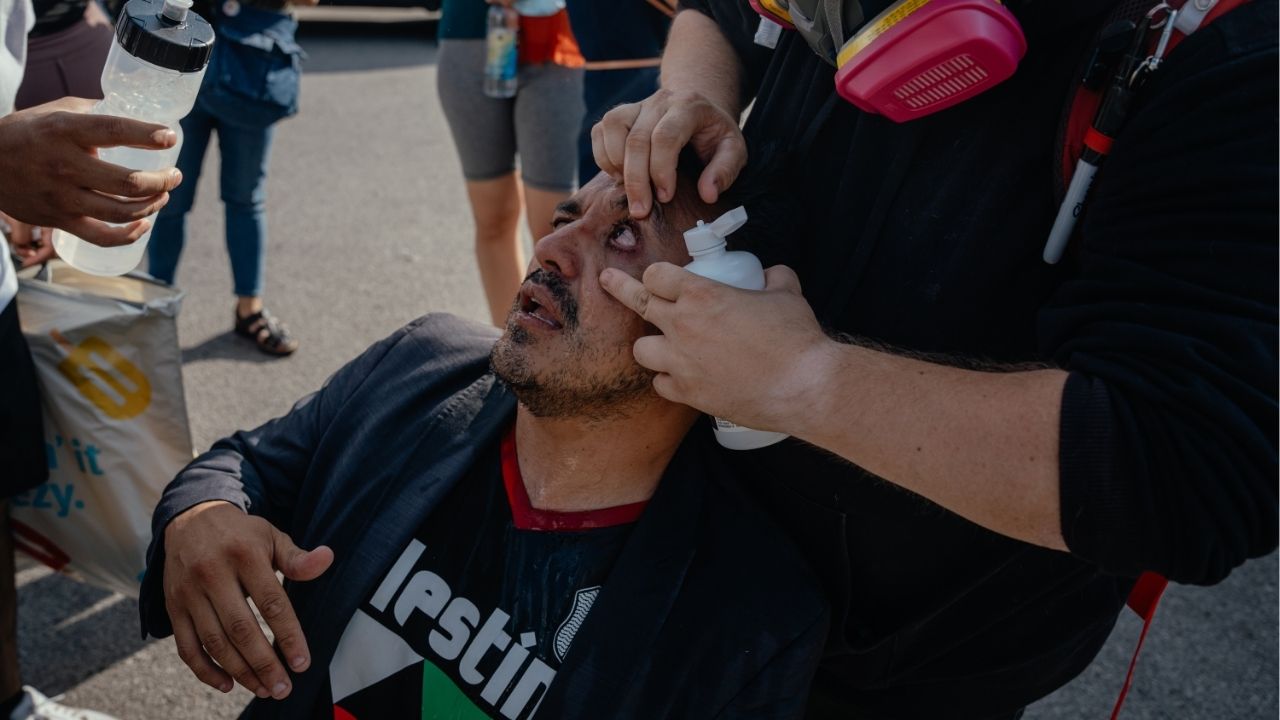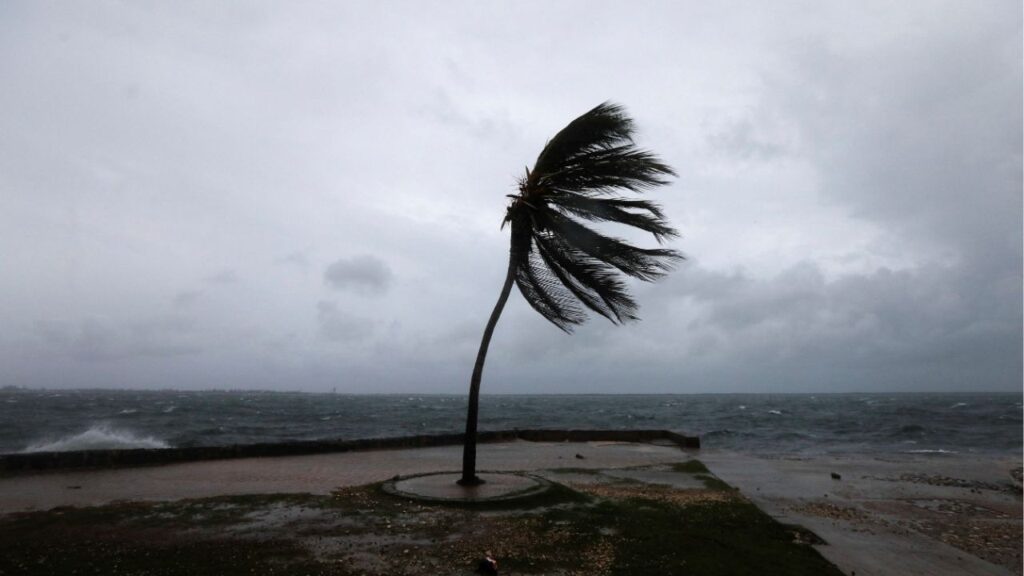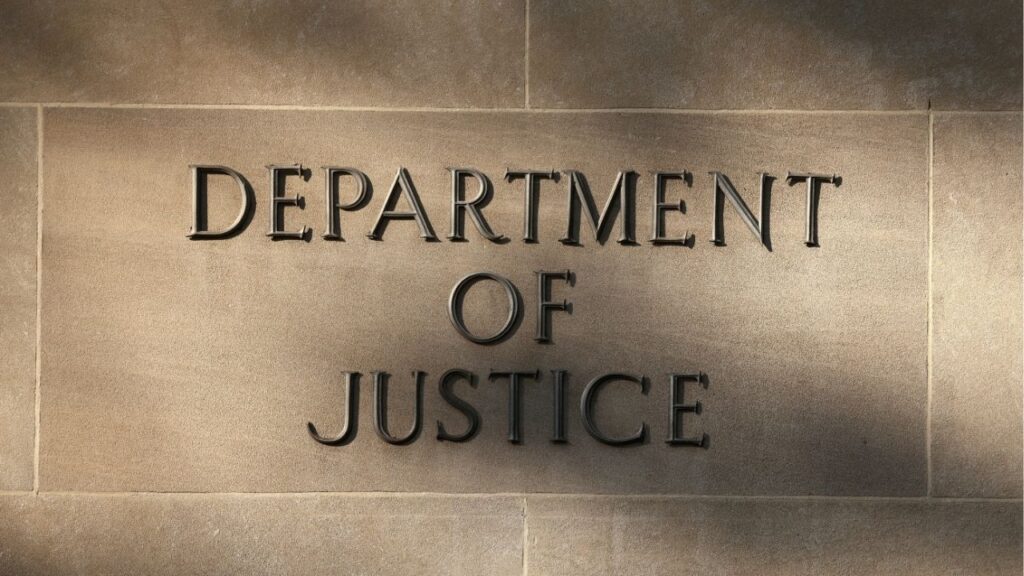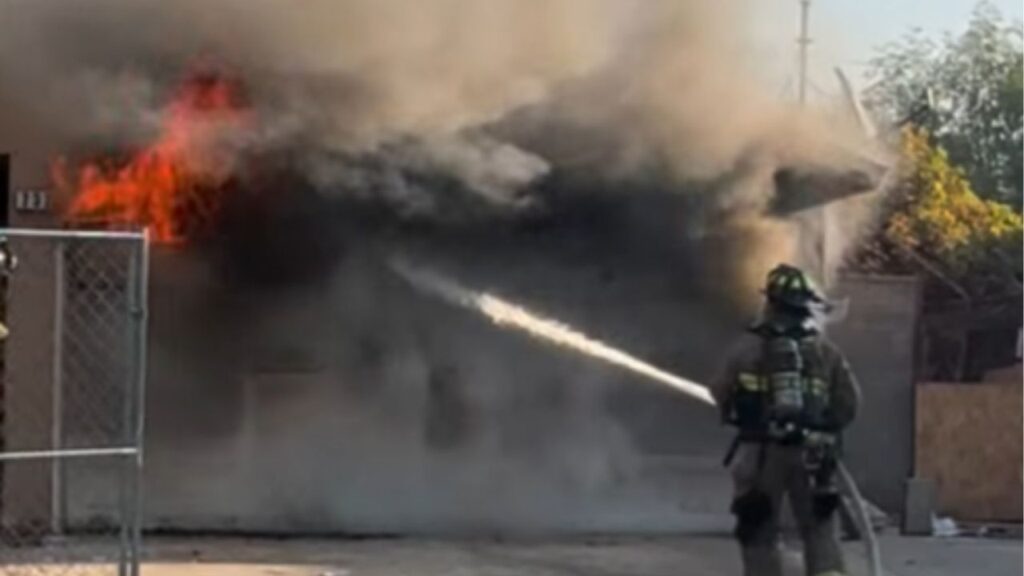Alderman Byron Sigcho-Lopez has his eyes washed out after federal agents used non-lethal rounds on a crowd of protesters that had gathered following reports that a woman was shot by federal agents in the Brighton Park neighborhood of Chicago on Saturday, Oct. 4, 2025. The repeated use of tear gas by federal immigration officers in Chicago has renewed a debate about how chemical irritants should be used by law enforcement personnel. (Jamie Kelter Davis/The New York Times)
Share
|
Getting your Trinity Audio player ready...
|
Federal agents carrying out President Donald Trump’s crackdown on illegal immigration have repeatedly clashed with protesters and bystanders across the Chicago area in recent weeks. Sometimes, the agents have used tear gas, drawing criticism and bringing new attention to the chemical irritant that has been used by American law enforcement officers for decades.
Generally, police officials say tear gas can help bring unruly crowds under control without hand-to-hand violence between officers and demonstrators, and with a lower risk of serious injury. But the chemicals can also have serious health effects, and police agencies have often been accused of using tear gas without justification or without giving sufficient warnings.
Here’s what you should know about tear gas:
Tear Gas Has Been Used for Decades
Tear gas is a generic term referring to several chemicals that cause people to experience burning and excessive tearing in their eyes, along with other symptoms.
The use of tear gas in military conflicts is banned under international treaties, but the chemicals have been used for decades in domestic policing in the United States and other countries.
During protests in the United States, law enforcement officers sometimes fire canisters containing tear gas toward a crowd with the goal of dispersing the people who have gathered.
The Use of Tear Gas Carries Health Risks
The short-term effects of tear gas exposure are often intensely painful. But in most cases, according to the Centers for Disease Control and Prevention, symptoms resolve 15 to 30 minutes after a person moves away from the source of the gas and gets cleaned off.
Severe outcomes are possible, though, including lung damage, blindness, chemical burns and respiratory problems.
Dr. Rohini Haar, an emergency physician and a faculty member at the University of California, Berkeley, said the amount of tear gas used and the way it is deployed help shape how the body responds.
“Like any poison, it’s a dose effect,” said Haar, who has studied the effects of tear gas and has criticized how it is often used by law enforcement officials. “If you have very little, you probably have much less impact. When you’re exposed to lots — either over time, chronically, or a lot in a short time — those effects are worse and more dangerous.”
Tear gas also can also harm bystanders and others who might not have been part of whatever threat the police perceived, Haar said.
“You’re not really targeting an individual,” she said. “You’re throwing canisters that aerosolize the chemical, the poison, all over that space.”
It Can Be an Alternative to Other Methods of Crowd Control
Police officials say tear gas can be a safer alternative to other tactics when officers are facing a threatening crowd. Tear gas is generally considered less dangerous to protesters and police officers than direct confrontations with batons or police dogs. And it generally causes fewer serious injuries than rubber bullets or other projectiles.
Brian Higgins, a former police chief in New Jersey, said using chemical irritants allowed police officers to disperse a crowd without resorting to the sorts of tactics shown in “those pictures you would see from the ’50s and ’60s with a dog biting a guy, or a cop on a horse hitting somebody.”
Higgins, who is now an adjunct professor at the John Jay College of Criminal Justice, said using “any irritant, any gas, is not your first choice, or should not be,” except for in rare circumstances. And he said police officers should issue verbal warnings and assess the situation to determine whether using tear gas is necessary and safe.
“It depends on the crowd — it depends on the setup, where people are,” said Higgins, who said he had made decisions about when to use tear gas during his policing career in Bergen County, New Jersey. “You don’t want to use irritants in an area where the irritant can’t disperse quickly.”
There Is No Universally Accepted Set of Best Practices
There is no single set of rules for how tear gas is used in the United States, leaving a patchwork of regulations that can vary from state to state and agency to agency. Officers sometimes rely on instructions from tear gas manufacturers on how to deploy the chemicals.
Some police departments publish detailed “use of force” guidelines that outline when and how chemical irritants can be used. The Illinois State Police, for instance, says troopers can use tear gas only after issuing a warning and giving people a chance to disperse, unless giving that warning would pose a risk of death or great bodily harm.
In Chicago, a federal judge has placed temporary limits on how federal agents can use tear gas in the immigration operation that began in early September. Plaintiffs in a lawsuit, including protesters and journalists, have argued that the agents have used tear gas indiscriminately and without warning. The federal government has defended its tactics and argued that tear gas has been limited to instances when agents were facing an immediate threat.
Many jurisdictions revisited their rules on tear gas after widespread protests that followed the murder of George Floyd in Minneapolis in 2020, and some congressional Democrats pushed for stricter rules on how federal agents use tear gas. During those demonstrations in the summer of 2020, officers in some cities were accused of using tear gas without justification.
“While such irritants can help de-escalate violence, their growing use in nonviolent situations for crowd control or curfew enforcement should cause significant concern,” Sen. Tim Kaine, D-Va., said in 2021 when he introduced legislation that called for new limits on tear gas use by federal law enforcement agencies. His bill did not pass.
—
This article originally appeared in The New York Times.
By Mitch Smith/Jamie Kelter Davis
c. 2025 The New York Times Company
RELATED TOPICS:
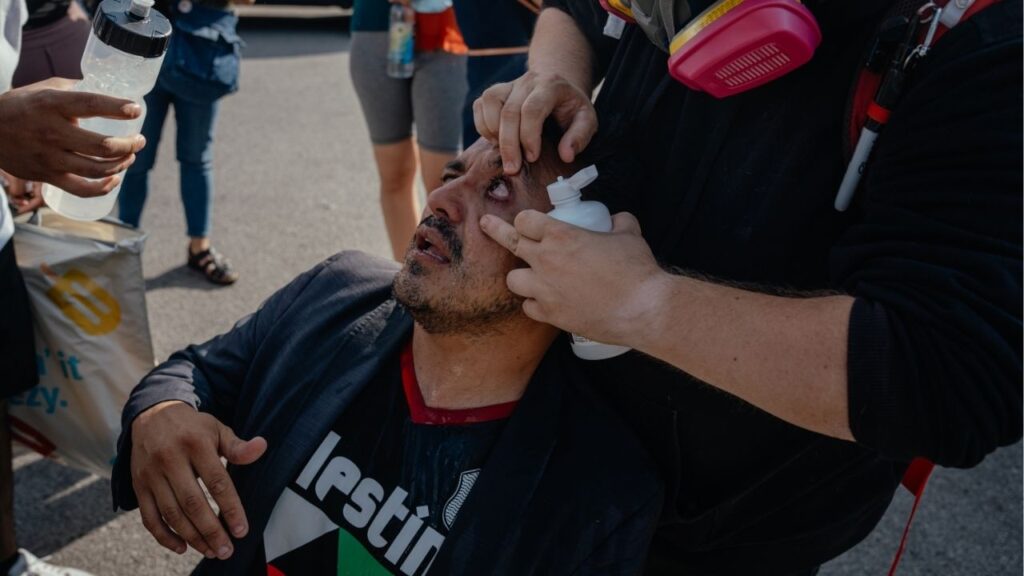
Tear Gas Can Be Dangerous. The Rules on How to Use It Vary.

Texas Sues Tylenol Makers, Claiming They Hid Autism Risks




